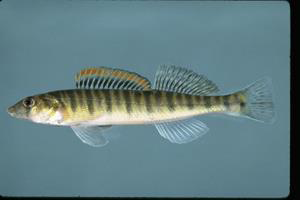Logperches sometimes use their snout to flip over stones when searching for hidden food items such as small crustaceans or immature aquatic insects.
Photo Credit: Noel Burkhead
Percina caprodes
Common Name: logperch
Animal Guild: Fish
Class > Order > Family: Teleostei > Perciformes > Percidae
